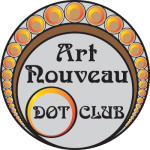Jan Toorop: The Artist Who Inspired Gustav Klimt
Jan Toorop (1858–1928) influenced the works of Gustav Klimt, among other prominent artists, and his art continues to inspire and captivate audiences around the world, and his contributions to the European art movement of the late 19th and early 20th centuries will always be remembered.
Jan Toorop was a Dutch-Indonesian artist who played a significant role in the development of Art Nouveau in the Netherlands. His distinctive style, characterized by flowing lines, bold patterns, and intricate symbolism, was a major influence on many artists of his time, including the renowned Austrian painter Gustav Klimt.
Toorop was born in 1858 in Purworejo, Java, and spent much of his childhood in the Dutch East Indies. He later moved to the Netherlands, where he studied at the Royal Academy of Art in Amsterdam. His early work was influenced by the Realist and Naturalist movements, but he soon developed his own style, which drew on a variety of sources, including the Pre-Raphaelites, Japanese prints, and Symbolist art.
One of Toorop’s most significant contributions to the development of Art Nouveau was his use of the “whiplash” line, a sinuous, curving line that he used to create flowing, organic forms. This approach was a departure from the more rigid, geometric forms that had dominated art and design in the preceding decades and helped to usher in a new era of fluidity and naturalism.
Toorop’s influence on Klimt can be seen in the latter’s use of flowing lines and ornate patterns, as well as his interest in Symbolist themes and motifs. Klimt’s famous painting “The Kiss,” for example, features a couple locked in a sensual embrace, surrounded by intricate patterns and symbols, which are reminiscent of Toorop’s work.
In addition to his impact on Art Nouveau, Toorop was also a prominent figure in the Dutch Catholic art community. His conversion to Catholicism in 1905 had a significant impact on his work, leading him to create many religious-themed paintings and murals. His interest in spirituality and mysticism is evident in many of his works, which often feature symbolic imagery and allegorical themes.
Toorop’s influence on the art world was significant, and his legacy continues to inspire and captivate viewers today. His unique style, which combined elements of Art Nouveau, Symbolism, and religious art, was a major force in the development of modern art and design, and his impact can be seen in the work of many artists who followed in his footsteps.
Did Toorop and Klimt met?
There is no historical evidence to suggest that Jan Toorop, a Dutch-Indonesian painter, and Gustav Klimt, an Austrian Symbolist painter, met in person. Toorop and Klimt were active during the same period in the late 19th and early 20th centuries, but they were associated with different art movements and geographic regions.
Jan Toorop was associated with Symbolism and Art Nouveau movements and was primarily active in the Netherlands and Belgium. Gustav Klimt (1862–1918), on the other hand, was a prominent figure in the Vienna Secession movement and is best known for his decorative and symbolic paintings. While their works may share some characteristics of the broader Art Nouveau movement, they operated in different artistic circles, and there is no documented meeting between the two artists.
It’s important to note that the art world during that time was vibrant and interconnected, with artists often aware of each other’s work, even if they didn’t personally meet. However, in the case of Toorop and Klimt, there is no historical record of a direct encounter between them.
Click HERE for information about the Klimt art nouveau private tour that we offer in Vienna.
Exploring the Multifaceted Influences on Gustav Klimt’s Artistic Style.
